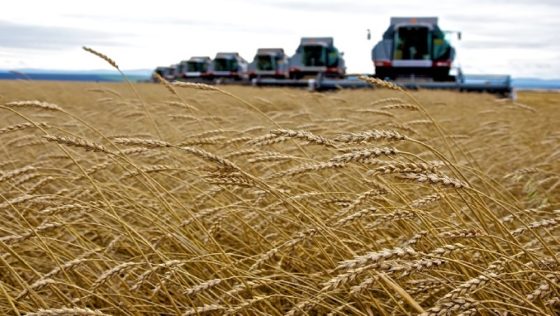
Storing wheat in case the SHTF is very popular among preppers and survivalists. But so many don’t know what to do with all that wheat they’ve stored up. Because of that, I’ve decided to detail one great way you can use your wheat after the SHTF.
There’s a reason preppers store wheat: it lasts a long time and is nutritionally hearty. Hard grains, (which include more than just wheat) such as buckwheat, corn, flax, mullet, Kamut, spelt, and triticale, if stored properly, have an average shelf life of 10 to 12 years, however, this can be increased to 30 years or longer with the correct equipment. Not to mention wheat is inexpensive and storage isn’t all that difficult. To ensure the proper long-term storage of grains, use the following:
But all that properly stored wheat is useless if you aren’t sure what to do with it. Make sure you’ve got a manual grinder so it’ll work in times when the grid is down. One tip is to only grind up the wheat as you use it because it loses its nutritional value as it oxidizes after being ground. This decreases the length of time it can be stored. But once you’ve ground up your wheat into flour, you can make simple yeast-free “Prepper’s Bread.”
You can make “Prepper’s Bread” in a solar oven, or over an open campfire. This also works in a Dutch oven! The four ingredients you’ll need are:
- 1 cup of fine whole wheat flour (grind your own)
- 2 tbsp. of olive oil (optional, also regular vegetable oil works too)
- 1 tsp. salt (optional, add to taste)
- 1/2 cup of water
Mix everything together and use a flat surface (a cookie sheet, a flat rock, etc.) dusted with flour to knead your bread for 5 minutes. Then bake it on the cookie sheet or a rock over the campfire. Be sure to flip your bread often until it’s a nice brown color. Or bake the bread in the solar oven or Dutch oven for 20 minutes at 350 degrees.
This bread is nutritious and will help keep you full if you’re in survival mode. This recipe will serve about 3-4 people if eaten as a side with a meal or make about 3 sandwiches.
Wheat is a great option for preppers on a budget. Money is often an obstacle for beginner preppers, but wheat is an inexpensive great start to a survivalist food supply.
I always suggest beginners attempt to make some things such as the “Prepper’s Bread” before the SHTF, just so there is an awareness of how it bakes and tastes, and changes that can be made to the recipe to better suit you. It’s also a fun experiment, one in which we learn what NOT to do beforehand.










0 Comments